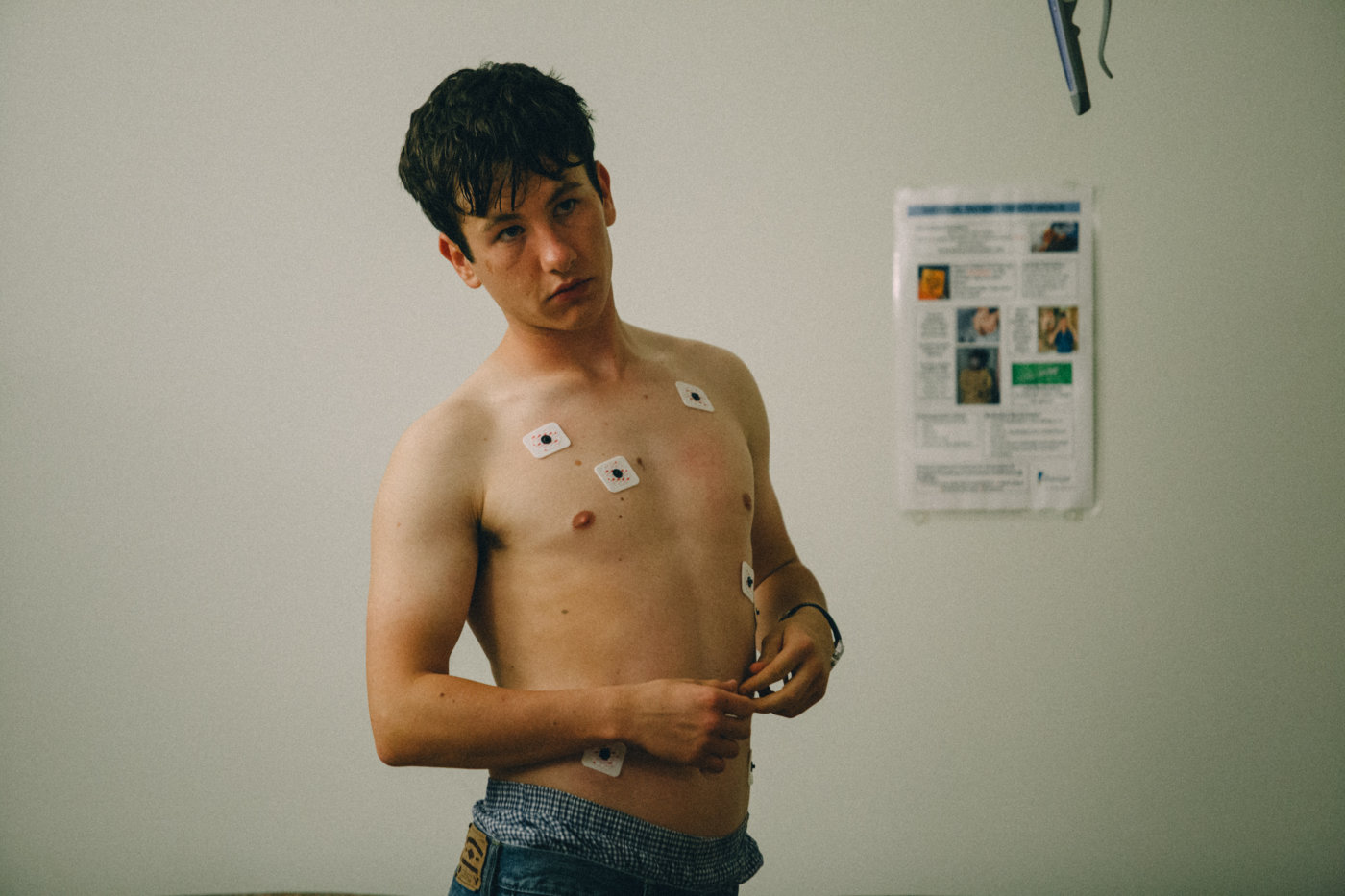Step one is paralysis of the lower extremities. Step two is permanent loss of appetite. Step three is bleeding from the eye sockets. Step four is death. You might need these; they’re only said once and the person who says them can go two hundred lines or so without saying anything of consequence. And these are the stages in The Killing of a Sacred Deer, the latest from psychological torture hound Yorgos Lanthimos.
It takes a while for anything to happen in this film. Steven Murphy (Colin Farrell) appears to be a surgeon with a standard nuclear family. His wife Anna (Nicole Kidman) also works in health care, and his two children are normal teens. Sure, he can’t seem to get it up unless his wife plays “cemetery” in the bedroom, but what you do in the bedroom is only your business (and the camera’s). The only out-of-place part of Steven’s life is a relationship with Martin (Barry Keoghan), an odd and bizarrely matter-of-fact teen — is he a spectrum dweller? The first 30-45 minutes of this film is entirely devoted to figuring out Steven’s relationship with Martin. Are they friends? Are they lovers? Does one hold a debt over the other? Is one of them impaired in some fashion? Their interactions often include gifts, but never warmth. It is the kind of relationship where one of the parties clearly feels sorry for the other, but you can’t quite tell which one or why.
And then it comes – the quiet moment that changes the film into an experience. Watching this movie is like being awoken by a sledgehammer to the groin. Hmmm, that’s nice … yeah, that relationship is odd, wonder what’s going on there … zzzzz … HOLY CRAP! DID THAT JUST HAPPEN?!” Why yes. Yes, it did. I can’t tell you what happened without spoiling it; suffice to say if you bother seeing the first part of the film, you kinda have to see the rest of it.
Characters in a Yorgos Lanthimos films have a stilted and personal way of talking as if everything a player says –regardless of who is on the receiving end– is soliloquy or aside, rather than interaction. Dialogues never quite connect. It’s a little like if Wes Anderson wrote psychological drama instead of ironic comedy. I don’t quite know how to describe this other than imagine two characters relating what they think or see without the other person being present. Conversations exist, but rarely flow, as if the editor simply inserted snippets of random text. Well over 90% of this script could be shot individually. This is obviously a directorial choice. Real people rarely talk as if the other person isn’t there. Colin Farrell is especially good at following this style of hesitant interaction. This technique worked better in The Lobster, where the dystopian “couple-or-die” plot line naturally gave rise to awkward forced and self-conscious conversation; here, I feel like Steven doesn’t know his family any better than this teen with whom he’s developed a relationship.
Colin Farrell is especially good at following this style of hesitant interaction. This technique worked better in The Lobster, where the dystopian “couple-or-die” plot line naturally gave rise to awkward forced and self-conscious conversation; here, I feel like Steven doesn’t know his family any better than this teen with whom he’s developed a relationship.
What’s most maddening about The Killing of Sacred Deer is I can’t actually tell you anything about it without giving away major plot points, of which film only had precious few to spare in the first place. I can tell you how I felt about the film – uneasy, disturbed, like suddenly discovering that, say, your favorite food no longer existed. Yet moreso into the supernatural, like as if your favorite food had never existed. I’m not sure I enjoyed The Killing of a Sacred Deer so much as appreciated it, and I would have appreciated it much more had The Lobster not already happened.
A surgeon’s isn’t always so pretty
Whether in burbs or in the big city
The options that be
Trade one life for three
And pray your deity isn’t without pity
Rated R, 121 Minutes
Director: Yorgos Lanthimos
Writer: Yorgos Lanthimos, Efthymis Filippou
Genre: Is this really happening?
Type of being most likely to enjoy this film: Vengeance fanatics
Type of being least likely to enjoy this film: Doctors



